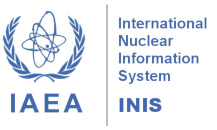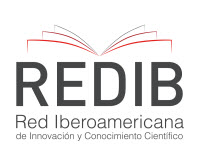New article published: V. 13 n. 4 (2025)
Radionuclides Leaching Assessment and External Exposure on Building Materials Containing NORM Residue
Abstract: Brazil’s titanium dioxide production generates approximately 30,000 tons of waste annually, known as unreacted ore waste (UOW), which is currently disposed of in industrial landfills. This residue is enriched with naturally occurring radionuclides from the uranium and thorium decay series and is classified as Naturally Occurring Radioactive Material (NORM). The reuse of NORM residues in building materials is only permissible if the activity concentrations of radionuclides in the final product do not pose any additional exposure risk to individuals. Radiation exposure from such materials may be classified as external—due to direct gamma irradiation—or internal—resulting from inhalation of radon (222Rn) and its short-lived decay products. In a previous study, the authors assessed both internal and external indoor exposure associated with incorporating up to 23% of UOW into cement and interlocking blocks. This study evaluates the feasibility of using these materials in outdoor applications, with particular emphasis on radionuclide leaching potential and external radiological exposure. Cement and interlocking blocks containing varying proportions of unreacted ore waste (0%, 3.5%, and 23%) were subjected to weathering for 60 days. The activity concentrations of 238U, 226Ra, 210Pb, 232Th, 228Ra, and 40K in the leachate were measured using gamma spectrometry and spectrophotometry. No significant increase in radionuclide concentrations were observed in the leachate from blocks containing 3.5% and 23% UOW compared to those without any residue. Gamma radiation exposure remained consistently below 0.1 mSv, and no notable changes were detected in radon concentrations in the vicinity of the experiment. The results indicate that incorporating up to 23% UOW in cement and interlocking blocks is safe and compliant with regulatory limits related to groundwater contamination and human exposure when using these materials in an open air environment. Read full article.






















